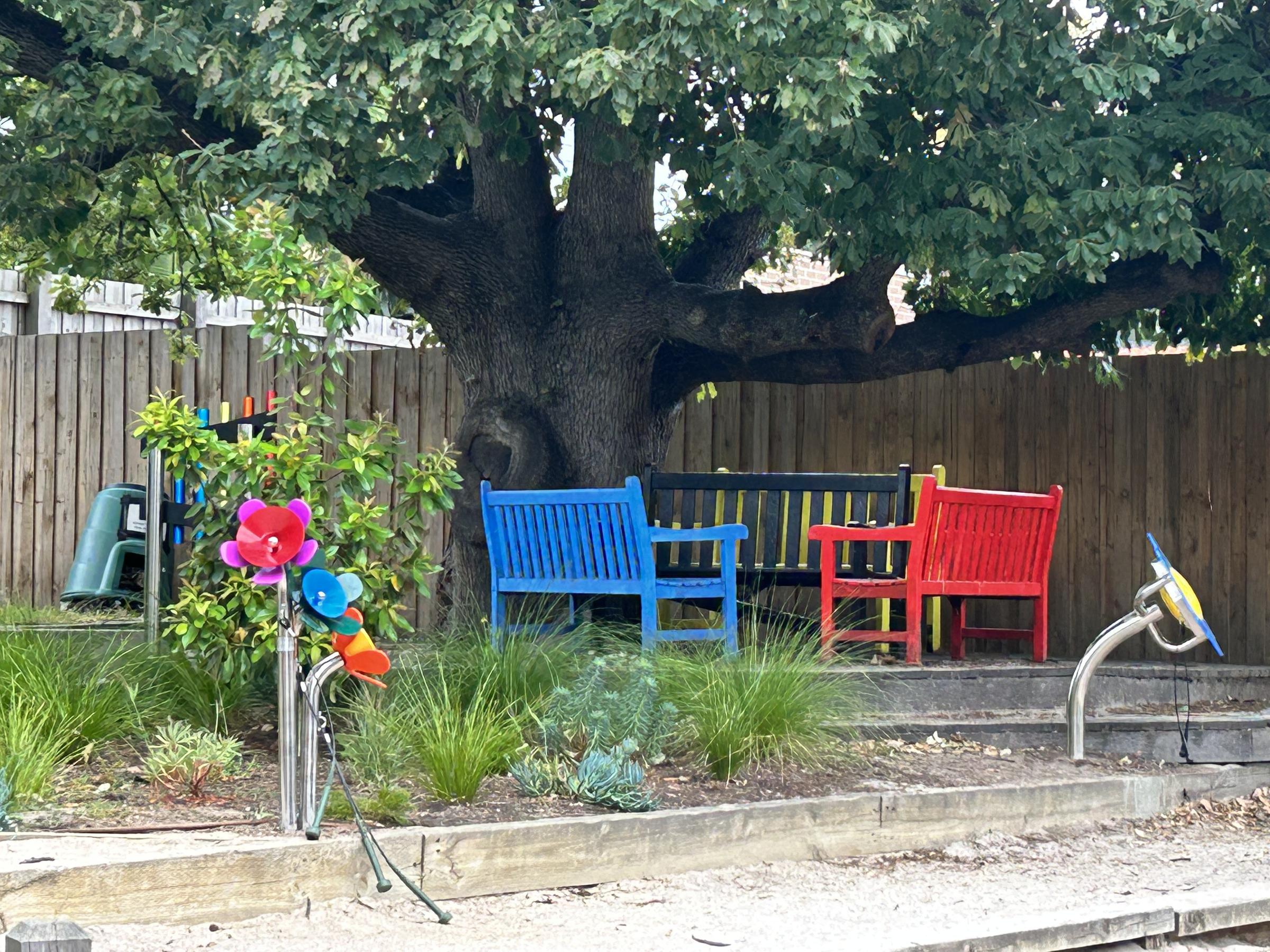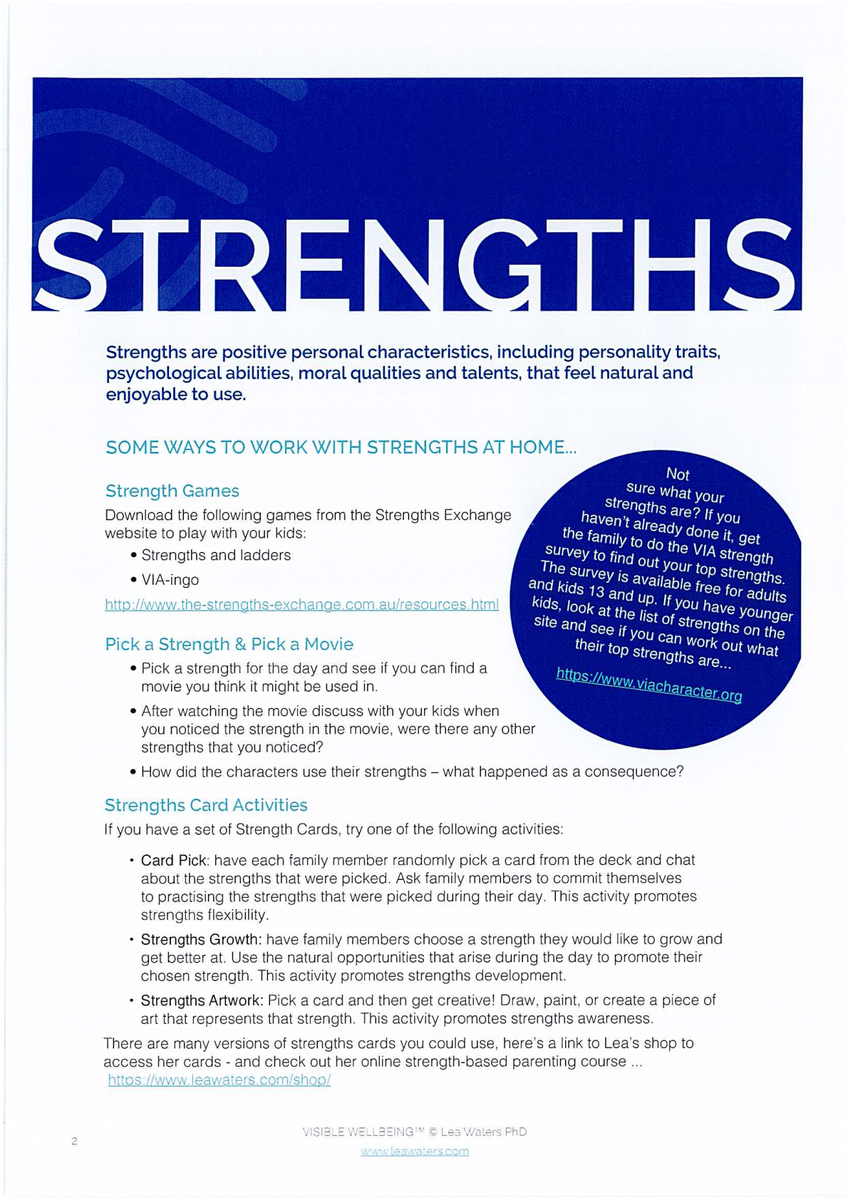Wellbeing
Amanda Howe | Assistant Principal

Wellbeing
Amanda Howe | Assistant Principal
Last week, all teachers undertook the next stage of our VWB training where we learnt about Strengths. A strength is defined as a positive quality/talent that is energising, we choose to use, and we perform well at. Strengths help us match ourselves and other people to our environments and allows us to better meet challenges by utilising those qualities where we can be our best selves. Strengths are a great tool to use in families and parenting also – Professor Waters’ book The Strength Switch is a wonderful place to start if you are wanting more information on how to use strength-based parenting in your homes.
Personal Strengths is Topic 2 of the RRRR curriculum. Our children need a vocabulary to help them recognise and understand strengths and positive qualities in themselves and others. This topic provides learning activities to build this vocabulary and to use it when discussing personal, social and ethical challenges. Research in the field of positive psychology emphasises the importance of identifying and using individual strengths. Social and emotional learning programs which use strengthbased approaches promote student wellbeing, positive behaviour and academic achievement.
All students will be engaged in explicit teaching around understanding and using their strengths. Teachers have access to activities provided as part of our VWB partnership as well as the Resilience, Rights and Respectful Relationships (RRRR) curriculum and all teams have planned learning activities using these evidence based resources.
Personality strengths – our character – play a big role in helping us build our our talents. Think about anyone who has built a talent and imagine if it could have been done without character. Imagine Einstein without curiosity, The Beatles without creativity, Mother Teresa without compassion or Neil Armstrong without bravery.
Yet for decades, scientists were blind to character strength. We focused on talent, often on physical strength and skills. In fact, when I first ask young children what they think a strength is, they almost always point tao their biceps or talk about being able to lift something heavy.
Once you get familiar with the language of strengths and a framework for seeing them, you’ll see character strengths easily in your child. In fact, you may find your child calls on their character strengths more often than on talent to meet life’s challenges.
You’ve probably seen a child joylessly perform at a piano recital. They may hit all the right keys, but there’s no energy or enthusiasm. It’s as if they don’t want to be there. On the flip side, we’ve seen the child onstage who’s clearly motivated and energised and who fearlessly flails through every mistake – of which there are many.
It turns out that three elements come together to form a strength. For purposes of strength-based parenting, we need to keep our eye on all three:
1. Performance (being good at something). Watch for when your child shows above-age levels of achievement, rapid learning, and a repeated pattern of success.
2. Energy (feeling good doing it) Strengths are self-reinforcing. The more we use them, the more we get from them. They fill us with vigour. You’ll notice your child has abundant energy when using a strength.
3. High use (choosing to do it) Finally, look for what your child chooses to do in their spare time, how often they engage in a particular activity, and how they speak about that activity.
For true strengths, these three elements form a beautiful feedback loop: great performance provides the child with a shot of high energy, so the child naturally chooses to do more. In turn, high use – also known as effort or practice – improves performance levels. So, for example, if you notice that your child is energised when they play the piano, and you provide enjoyable opportunities for them to play, if they’re mining a true strength they will likely practise more, which improves their performance, which then energises them … and so the loop continues.
Keeping this triad in mind will help you avoid pushing your child into an area that seems like a strength just because your child is good at it. It will also help you differentiate between whether your child is bingeing on an activity in an escapist way or expressing a true strength.
For example, when a parent asks me, ‘My son is great at computer games and wants to play all the time. Is that a sign of a strength?’ I reply, ‘Observe his energy levels at the end. Is he drained and cranky? Or energised and full of life? Are you seeing the full triad?’ Computer games can tap into a child’s strategic and problem-solving skills or stimulate creativity (in some games, you invent whole new worlds). Or they might just be about filling time.
So look for all three signs. When you see your child do something well, with energy, and repeatedly, you’ll know you’ve unearthed a strength.
Discover your strengths, learn how to activate your strengths to and how to use them everyday in your lives.
https://www.viacharacter.org/


Lunchtime Clubs
Lunchtime clubs are up and running during the first half of each lunchtime across the week. The library is also open for the second half of lunch Tuesdays, Wednesdays and Thursdays.
Spaces are limited in all clubs.
Days | Venue | Activity | Yr Level | Captains/Leaders | Supervising Teacher |
| Monday | Oval/B-ball Court | Sports & Activities Club | 2-4 | Piper, Mia, Woody, Wanda, Jude, Olivia, Myles, Ayla, Callam & Silla. | Kylee |
| Monday | BER Room 33 | Magnificent Mondays (Board Games & Colouring) | F-2 | Ayla, Tamar, Cleo, Emma, Ari & Tasman | Anne |
| Tuesday | STEAM Room Room 7 | Lego Heros
| 2-4 | Jamie & Patrick | Mr. Young Anita |
| Wednesday | Chicken Coop | Wellbeing Wednesdays | F- 6 | Matilda & Anni | Amanda/John |
| Wednesday | Art Room | Art Club | F-6 | Jasper & Ava | Dani |
| Thursday | BER Room 32 & 33 | Thoughtful Thursdays (Colouring & Drawing) | Foundation ONLY
| Pippa and Holly | Alana and Anne |
| Friday | Alumbra Stage | Friendship Fridays | F-4 | Sam & Cleo | Amanda |
| Friday | Meet in the BER Room 33 | Gardening Club | 3-6 | Jackson & Sia | Anne & Jess |
Thank you to everyone who attended the VWB parent information evening. If you were unable to attend or would like to revisit the presentation, please follow the link below:
Passcode: 1@#M$mW#
The recording will be available for a two week period.